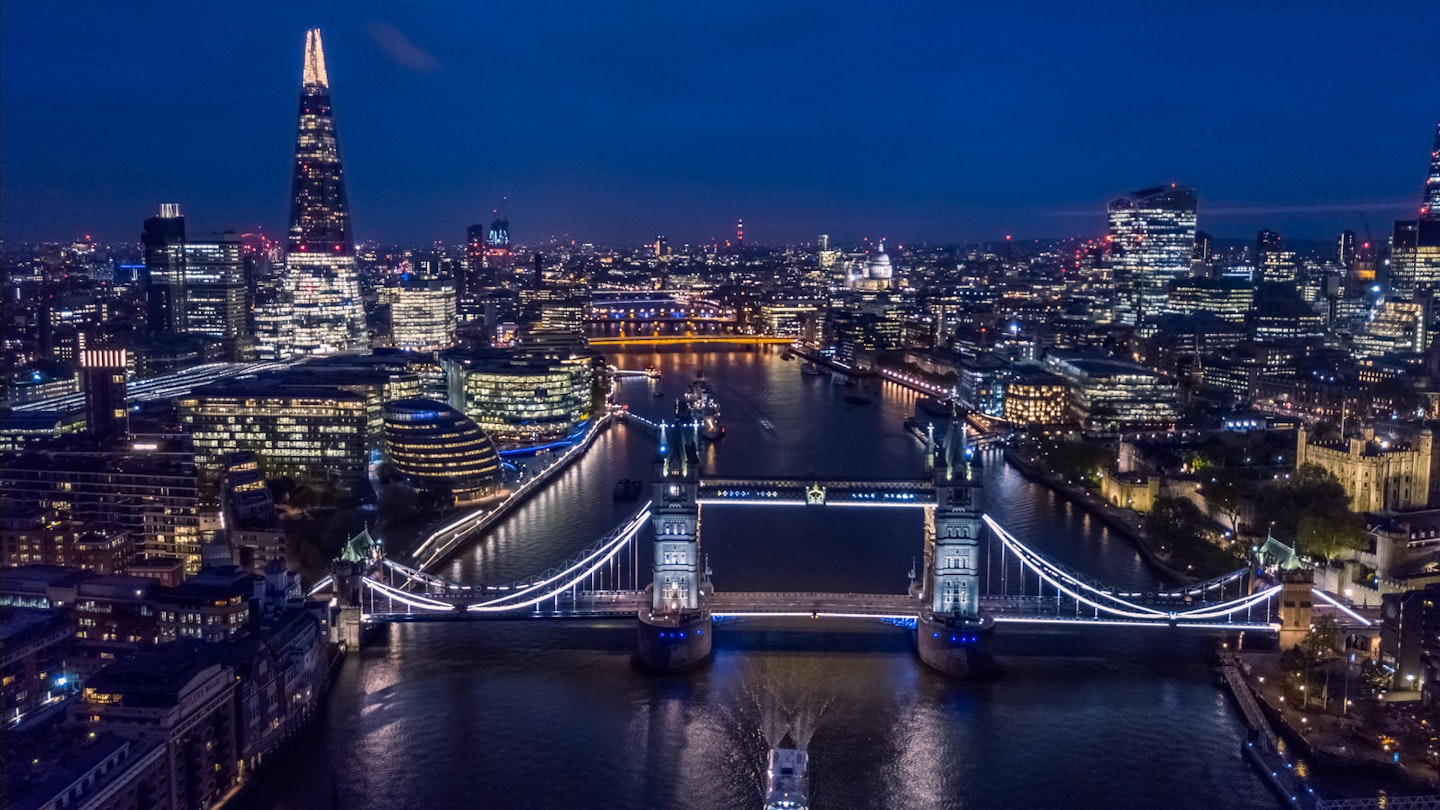The Remarkable Resilience of London: A Timeline of its Transformation
Given the various calamities that have befallen London over the last two thousand years, it’s remarkable that any of it exists today at all. This is a city that’s been ravaged by fire, ridden with plague, and bombed to rubble. It’s encountered the wrath of angry locals, bloodlust from Vikings, and more rebellions and riots than you can shake a pigeon at. Consequently, not only has London endured, but it’s often done so curiously intact, with architectural clues to its storied past scattered just about everywhere.
First Centuries AD: All Roads Lead to London
Though small settlements are likely to have been established along the Thames in prehistoric times, London’s true history begins with the Romans, who set up camp on the north bank of the Thames in AD 43 and named their new town Londinium. The port flourished, becoming one of the capitals of Roman Britannia and a center of imperial trade. After a brief hiccup in 60 AD, when a native tribal leader called Boudicca razed the place, the Romans regained control and rebuilt Londinium, this time as a planned town.
With increasing unrest across the empire, the city was fortified around 200 AD with a huge wall built to protect it. The outline of London Wall can be traced in many modern streets, with particularly well-preserved parts just north of the Tower of London. Nothing else from Roman London remains above street level, but the outline of an amphitheater can be seen in the Guildhall Art Gallery, and a temple to the god Mithras is open to visitors underneath the Bloomberg building.
At its height, Londinium had a population of at least 30,000, and possibly as much as 60,000, but as the empire began to crumble in the 5th century, the Roman legions withdrew from Britain, leading to the abandonment of Londinium by AD 410.
The 5th to 10th Centuries: Anglo-Saxon Settlers and Viking Marauders
Gradually, a new people called the Anglo-Saxons moved in from northern Europe, re-establishing a port just to the west of the Roman city around what is now Covent Garden. Little evidence of their presence remains, but plenty of information can be found at the Museum of London. The Anglo-Saxons significantly impacted London as we know it today, settling around the original town in remote countryside communities that eventually grew into the mass of villages making up what is now Greater London. Present-day districts whose names end in ‘-wich’, ‘-ham’, and ‘-ton’ are usually of Anglo-Saxon origin.
By the 800s, the town called Lundenwic was booming, a fact that didn’t escape the Vikings. For two hundred years, these intrepid Scandinavian warriors appeared and reappeared on the Thames, as London was wrestled between native and invading forces.
The Middle Ages: William’s Conquest
Power struggles continued until 1066, when William, a duke from Normandy, invaded and conquered England, marking a new chapter in London’s tumultuous history. To secure the River Thames against persistent Vikings and unhappy Anglo-Saxons, William the Conqueror commissioned the construction of the iconic Tower of London. Its oldest part, the White Tower, has stood in near-perfect condition for almost a thousand years and continues to captivate the imaginations of locals and visitors alike.
In the 12th century, St Bartholomew-the-Great was founded, and its chancel has survived the ages, providing an exquisite glimpse at original Norman architecture.
The 16th Century: The Tudors’ Rise
As the centuries passed, the Tudors came to power. Henry VIII had a significant influence on London, commissioning the magnificent Hampton Court Palace, enclosing what is now Hyde Park for hunting, and constructing St James’s Palace in Westminster. The reign of his daughter, Elizabeth I, marked a golden age for London as the city became a major European hub for trade, leading to a population explosion from 50,000 to 225,000 by the end of the century.
The 1600s: Catastrophic Blessings
London continued to grow under the Stuarts, but in 1665, the Great Plague broke out, claiming around 100,000 lives. Tragically, the following year, a fire started in a bakery, leading to the Great Fire of London, which decimated 80% of medieval London but paved the way for new growth and safer buildings made of stone. Architect Christopher Wren designed 52 new churches, including St Paul’s Cathedral, whose dome is now an integral part of the cityscape.
The 18th and 19th Centuries: Georgian Era and Victorian Expansion
As London entered the Georgian Era (1714–1830), it expanded further, with elegant neighborhoods like Mayfair emerging. The Victorians followed, creating intense development fueled by the Industrial Revolution, leading to the construction of iconic structures including Trafalgar Square and Tower Bridge under Queen Victoria’s reign.
The 20th Century and Beyond: Resilience Amidst Adversity
The capital faced challenges during the 20th century, particularly during World War II when the city was bombarded extensively. Much was destroyed, but, similar to previous disasters, much also survived. The post-war years were characterized by rebuilding efforts, leading to innovative architectural developments like the National Theatre and the BT Tower, reflecting the city’s adventurous spirit.
Today, London stands as one of the world’s great cities, a beacon of commerce and culture with remarkable buildings that showcase its global significance. Despite the uncertainty posed by modern challenges like Brexit, London’s resilient history reassures its inhabitants that the city will endure, just as it has throughout the ages.





